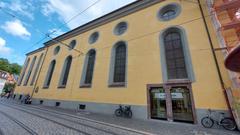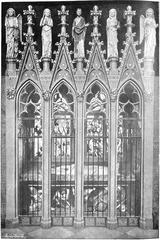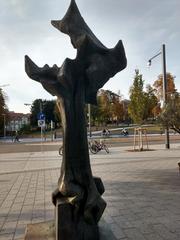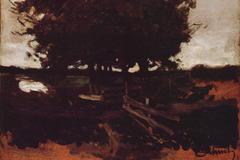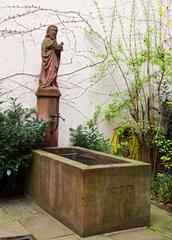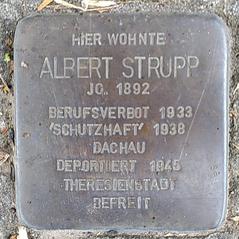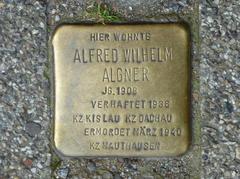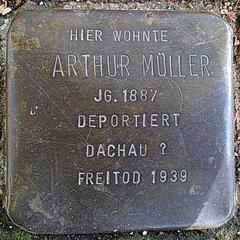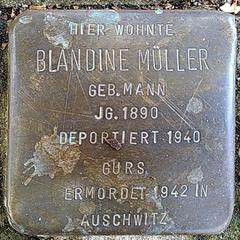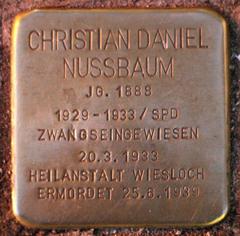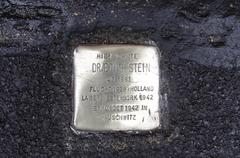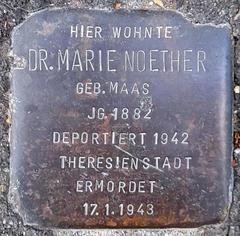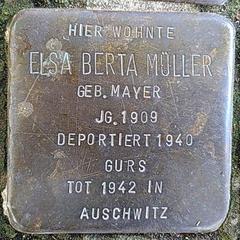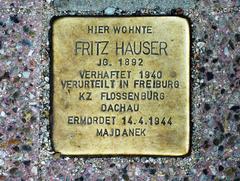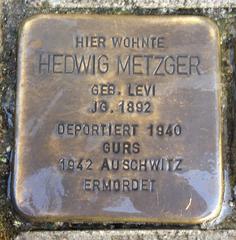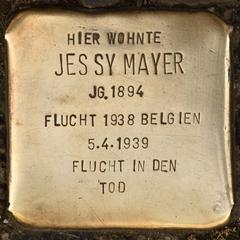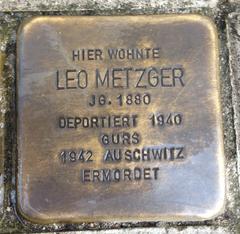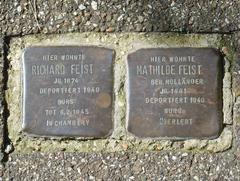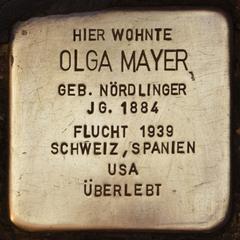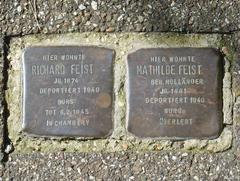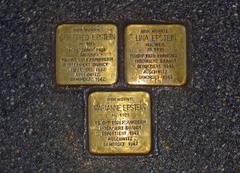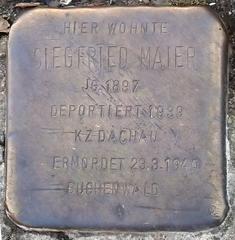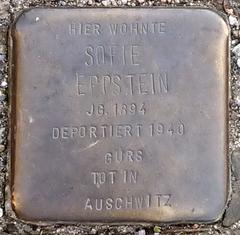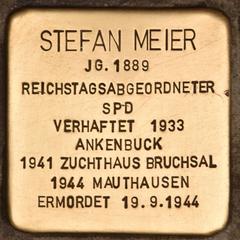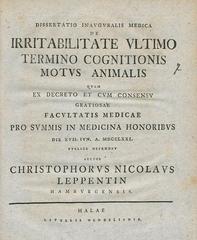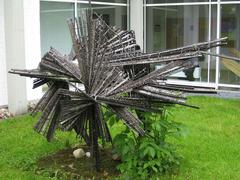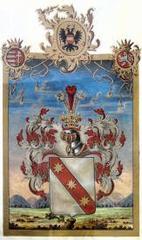Freiburg im Breisgau Historical Sites and Visiting Hours Guide
Date: 15/06/2025
Introduction to Freiburg im Breisgau Historical Sites and Visitor Information
Nestled at the edge of the Black Forest, Freiburg im Breisgau stands as a global leader in sustainable urban living, earning its reputation as Germany’s “Green City.” Renowned for its innovative environmental policies and lush urban landscapes, Freiburg offers visitors an exceptional blend of verdant spaces, eco-friendly neighborhoods, and a rich cultural heritage. From the historic Schlossberg Hill, offering panoramic vistas, to vibrant parks like Seepark and Mundenhof Wildlife Park, the city’s green infrastructure is an open invitation to nature lovers, history enthusiasts, and eco-conscious travelers.
Freiburg’s green legacy traces back to pivotal moments in the 1970s, such as the Wyhl nuclear protest, which galvanized environmental activism across Europe. Since then, the city has become a living laboratory for renewable energy, car-free zones, and participatory urban planning, with model eco-districts like Vauban and Rieselfeld at the forefront. These neighborhoods showcase sustainable architecture, community gardens, and low-carbon technologies, providing a window into the future of urban living (Ecocities Emerging; Academia.edu).
Freiburg’s extensive network of parks and green corridors is accessible year-round, with most sites open to the public and connected by efficient public transport, bike paths, and pedestrian-friendly routes. Whether hiking the Schlossberg trails, enjoying cultural events in the Stadtgarten, or exploring the biodiversity of the Rieselfeld nature reserve, visitors will discover experiences deeply embedded in the city’s identity (Lonely Planet; Travel Unwinded).
This guide provides comprehensive insights into Freiburg’s premier green spaces and historical sites, along with practical details on visiting hours, ticketing, accessibility, and guided tours. It also explores the cultural, social, and environmental significance of these areas, showing how Freiburg’s commitment to sustainability enhances urban life, community engagement, and well-being. Whether for a brief visit or an extended stay, use this guide to fully embrace Freiburg’s inspiring green spirit (World Habitat).
Table of Contents
- Introduction
- Historical Context: Freiburg’s Green Legacy
- Urban Planning and the Green Structure
- Model Eco-Districts: Vauban and Rieselfeld
- Signature Green Spaces and Historical Sites
- Civic Engagement and Green Mobility
- Cultural and Social Significance
- Practical Visitor Information
- Frequently Asked Questions (FAQ)
- Conclusion
- Call to Action
Historical Context: Freiburg’s Green Legacy
Freiburg’s reputation as Germany’s “Green City” was forged in the 1970s when citizens successfully protested a planned nuclear power plant near Wyhl, sparking a movement that would shape the city’s future (Ecocities Emerging). Subsequent focus on renewable energy—accelerated after the 1986 Chernobyl disaster—led to Freiburg being named Germany’s Environmental Capital in 1992. The city has since garnered numerous accolades for its environmental leadership, including the European Public Transport Award and the German Solar Award.
Urban Planning and the Green Structure
Freiburg’s urban design integrates approximately 500 hectares of green spaces, seamlessly connecting the city center with a surrounding green belt that encompasses the Black Forest, Schauinsland mountain, Mooswald forest, Rieselfeld nature reserve, and the Tuniberg vineyards. Urban parks such as Seepark and Mundenhof provide tranquil escapes within the city (Ecocities Emerging).
Model Eco-Districts: Vauban and Rieselfeld
Vauban
Developed on a former French military base, Vauban is a showcase for sustainable urban living. The district features passive solar buildings, low-carbon technologies, car-restricted zones, community gardens, and green roofs. A local cogeneration plant using wood chips powers the neighborhood. Guided tours are available for those interested in learning about its sustainable design (Academia.edu).
Rieselfeld
Once a wastewater spreading site, Rieselfeld is now a vibrant neighborhood designed for solar efficiency, with a district heating system and extensive parks. The area includes a 205-hectare nature reserve and European bird sanctuary, home to species such as white storks and red-backed shrikes. Walking and cycling paths provide interpretive signage on ecological restoration (Ecocities Emerging).
Signature Green Spaces and Historical Sites
Schlossberg (Castle Hill)
Schlossberg rises 456 meters above Freiburg’s center and played a crucial role in the city’s history since the 11th century (germanyfootsteps.com). It features remnants like the Bismarck Tower and Kanonenplatz, offering stunning views. Access is via hiking trails or the Schlossbergbahn funicular (daily 9:00 AM–6:00 PM, ~€3 round trip). The 35-meter Schlossberg Tower at the summit provides panoramic city and Black Forest views. Guided tours are available on summer weekends (visit.freiburg.de; travelunwinded.com).
Visitor Tips:
- Start from Stadtgarten for easy access via the funicular.
- Wear sturdy shoes for hiking.
- The tower climb is free.
- Kanonenplatz is perfect for sunset views.
- Combine with a visit to Freiburg Cathedral and Old Town.
Stadtgarten (City Garden)
Located in the Neuburg district, Stadtgarten is a 2.6-hectare park established in 1888. It features mature trees, a rose garden, and historic fountains (en.wikipedia.org). Open daily from dawn to dusk, entry is free. The park hosts concerts and yoga sessions in warmer months. The Erpeldenkmal monument honors a legendary duck that warned citizens during WWII.
Visitor Tips:
- Accessible on foot from the city center.
- Karlssteg footbridge connects to Karlsplatz.
- The funicular to Schlossberg departs from the park’s edge.
Seepark
Developed for the 1986 State Horticultural Show, Seepark in Betzenhausen features a lake, lawns, playgrounds, sports fields, and the Japanese Garden, which symbolizes Freiburg’s partnership with Matsuyama, Japan (germanyfootsteps.com; visit.freiburg.de). Open daily 6:00 AM–10:00 PM, entry is free. Paddleboat rentals and sports facilities have separate fees.
Visitor Tips:
- Japanese Garden is beautiful in spring and autumn.
- Check for seasonal concerts and festivals.
Mundenhof
Mundenhof combines parkland with an open-air zoo, housing domestic and exotic animals across 38 hectares (travelunwinded.com). Open daily 9:00 AM–6:00 PM, entry is free; parking has a small fee. Reachable by bus line 19. Features include animal feeding sessions and educational workshops.
Visitor Tips:
- Plan half a day for a visit.
- Family-friendly with playgrounds and a petting zoo.
Botanical Garden
Affiliated with the University of Freiburg, the Botanical Garden covers 3.5 hectares and houses over 5,000 plant species (travelunwinded.com). Open year-round from 8:00 AM to sunset, admission is free. There are themed outdoor sections and greenhouses. Guided tours and exhibitions are seasonally available.
Colombipark
Situated near Freiburg’s main shopping streets, Colombipark surrounds the neo-Gothic Colombischlössle, now the Archaeological Museum (visit.freiburg.de). Entry is free and the park is open year-round.
Möslepark and Waldsee
Möslepark is one of Freiburg’s oldest parks, with lawns, mature trees, and the scenic Waldsee lake. Rowboats are available May–September, and the Waldsee restaurant offers lakeside dining.
Eschholzpark
In the Stühlinger district, Eschholzpark features wide meadows, a circular pergola, and a chestnut avenue. Open daily from dawn to dusk; free entry.
Stühlinger Kirchplatz
This square, centered on Herz-Jesu-Kirche, hosts a farmers’ market on Wednesdays and Saturdays and an annual flea market.
Dreieckswiese
A riverside meadow under Sandfangbrücke with a fitness trail and slackline setup. Open daily, free entry.
Günterstal Valley
South of Freiburg, Günterstal Valley offers forested hills, streams, and a historic abbey. Accessible by tram line 2.
Alter Friedhof (Old Cemetery)
Active from 1683 to 1872, Freiburg’s Old Cemetery is a tranquil site with historic gravestones and greenery. Open during daylight hours; free entry. Occasional guided tours available.
Civic Engagement and Green Mobility
Freiburg’s green infrastructure is supported by strong civic engagement. A quarter of residents participate in environmental groups. The city boasts over 400 kilometers of bike paths, frequent trams and buses, and the Frelo bike-share system (Lonely Planet).
Cultural and Social Significance
Community Engagement and Participatory Culture
Freiburg’s parks and eco-districts were shaped through extensive citizen participation, including working groups and participatory budgeting (World Habitat). This fosters a strong sense of ownership and pride.
Social Integration and Multiculturalism
Parks and gardens serve as welcoming spaces for Freiburg’s international community, promoting inclusivity and multicultural events (What’s On in Freiburg).
Health, Well-being, and Active Lifestyles
With two-thirds of the city’s area devoted to green uses, Freiburg’s parks support active living and clean air. Neighborhoods like Vauban and Rieselfeld encourage walking and biking, contributing to public health (DW).
Environmental Stewardship and Education
Green spaces double as living classrooms, promoting solar energy, biodiversity, and sustainable living through signage, tours, and community gardening (Medium).
Innovation and International Influence
Freiburg’s planning principles are models for cities worldwide, with recognition including the European City of the Year 2010 and ambitious climate neutrality goals (World Habitat).
Everyday Life and Urban Identity
Green spaces are central to Freiburg’s lifestyle and identity, hosting countless seasonal events and fostering a unique blend of urban convenience and natural beauty (Visit Freiburg).
Accessibility and Inclusivity
Most parks are barrier-free and easily reached by public transport, making green spaces accessible to all (Medium).
Economic and Tourism Impact
Freiburg’s green spaces attract millions of visitors annually, boosting the local economy and providing a model for sustainable tourism (What’s On in Freiburg).
Practical Visitor Information
Visiting Hours and Tickets
- Most parks are open from dawn to dusk, year-round.
- Key facilities like Schlossbergbahn and Mundenhof have set opening hours (see site-specific sections).
- Entry to most parks is free; small fees may apply for certain attractions (e.g., Schlossbergbahn, paddleboats).
Getting There and Accessibility
- Freiburg’s public transport (trams/buses) and bike paths connect all major green spaces.
- Car-free city center encourages walking and cycling.
- Most parks offer wheelchair access; check park websites for details.
Guided Tours and Educational Programs
- Guided tours are available in eco-districts, Schlossberg, and the Botanical Garden.
- Educational programs are offered through centers like Waldhaus Freiburg.
- Booking ahead is recommended.
Sustainable Tourism Tips
- Use public transport or rent a bike to minimize your carbon footprint.
- Participate in community gardening or volunteer programs for a deeper experience.
- Respect park rules to protect biodiversity.
Frequently Asked Questions (FAQ)
Q: Are there entrance fees for Freiburg’s green spaces?
A: Most parks and nature areas are free; certain attractions like the Schlossbergbahn may charge a small fee.
Q: What are the opening hours for major green spaces?
A: Parks typically open from dawn to dusk; specific facilities may have set hours.
Q: Are Freiburg’s parks accessible for those with disabilities?
A: Many parks are wheelchair accessible, though some trails, especially on Schlossberg, may be challenging.
Q: Are guided tours available in English?
A: Yes, several tour operators and environmental centers offer tours in English.
Q: Can I bring pets to the parks?
A: Pets are generally welcome on a leash; check specific park rules for details.
Conclusion
Freiburg’s green spaces are more than just scenic landscapes; they are living expressions of a city committed to sustainability, inclusivity, and community. With a wealth of accessible parks, eco-districts, and historical sites, Freiburg offers a unique experience for visitors seeking to immerse themselves in a vibrant, eco-conscious urban environment. Use this guide for practical information on visiting hours, tickets, accessibility, and events to make the most of your stay.
For comprehensive visitor information, maps, and live updates, visit the official Freiburg tourism website.
Call to Action
Ready to discover Freiburg’s lush green spaces and historical sites? Download the Audiala app for audio-guided tours, insider tips, and offline maps. Explore related articles on Freiburg’s history and sustainable travel, and follow us on social media for updates and inspiration for your next visit!
References and Useful Links
- Ecocities Emerging
- Sustainable districts in Freiburg im Breisgau (Academia.edu)
- Top Things to Do in Freiburg (Lonely Planet)
- Explore Freiburg’s Lush Green Spaces: A Nature Lover’s Guide (Travel Unwinded)
- 30 Years of Planning Continuity in Freiburg (World Habitat)
- Freiburg Green Infrastructure Collaboration and Policy (Medium)
- The Green City of Freiburg: Is This Germany’s Future? (DW)
- Discover City History (Visit Freiburg)
- Parks and Gardens in Freiburg (Visit Freiburg)
- Theme Parks (What’s On in Freiburg)
